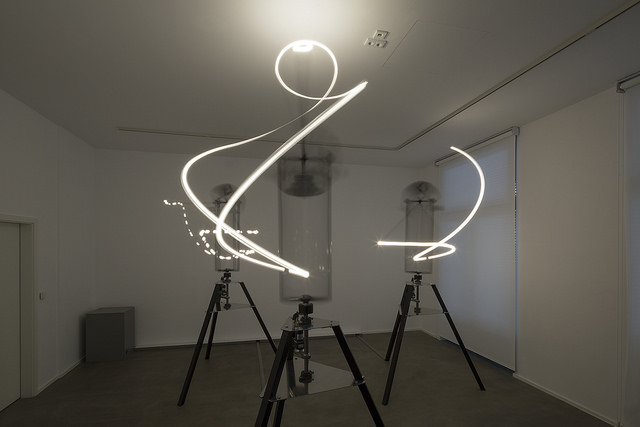
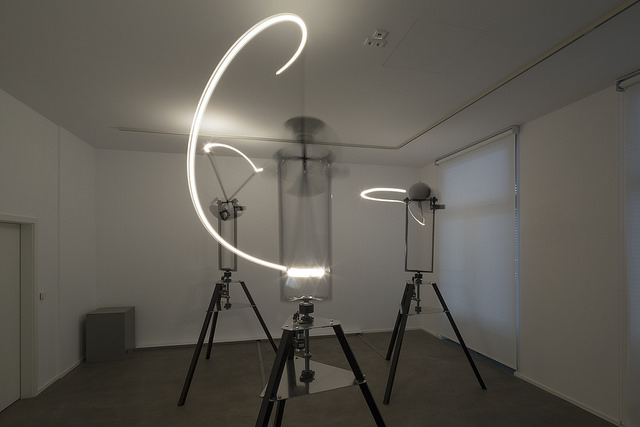
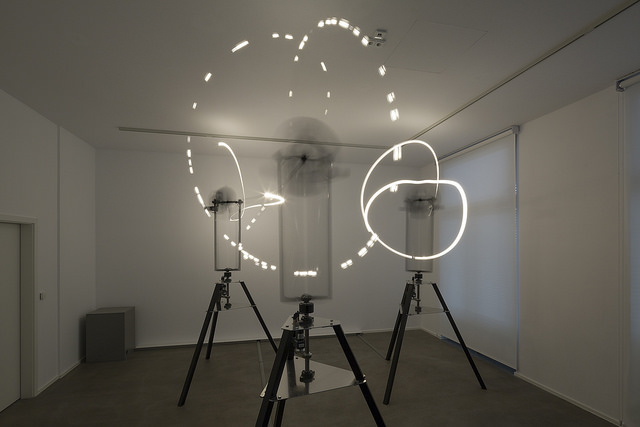
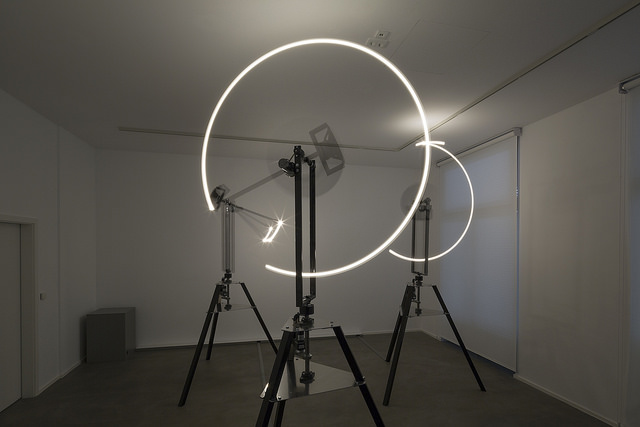
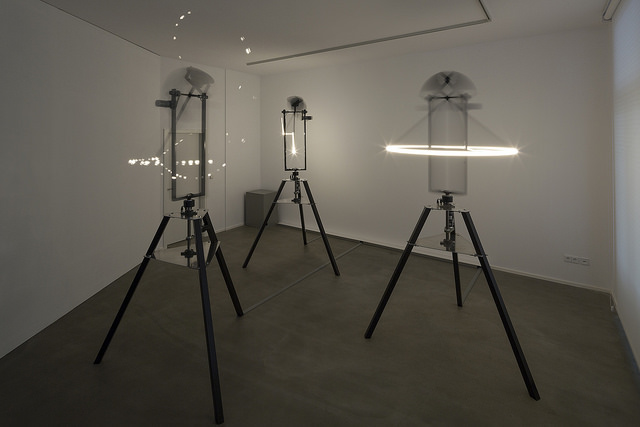
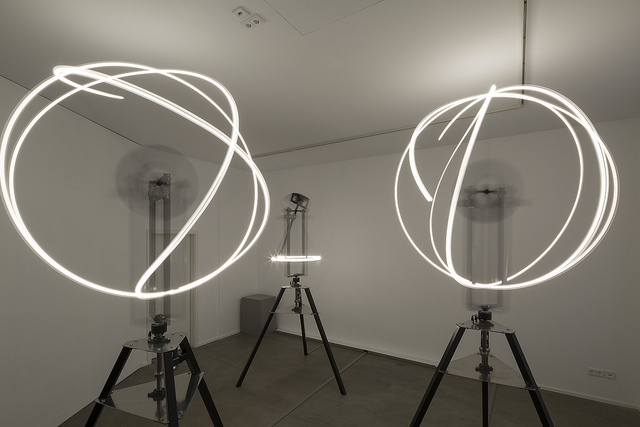
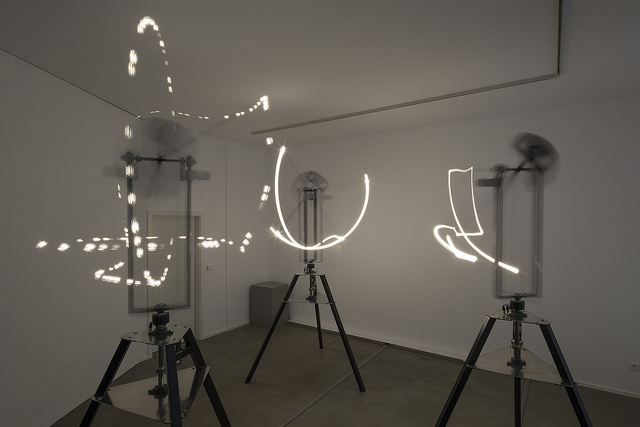
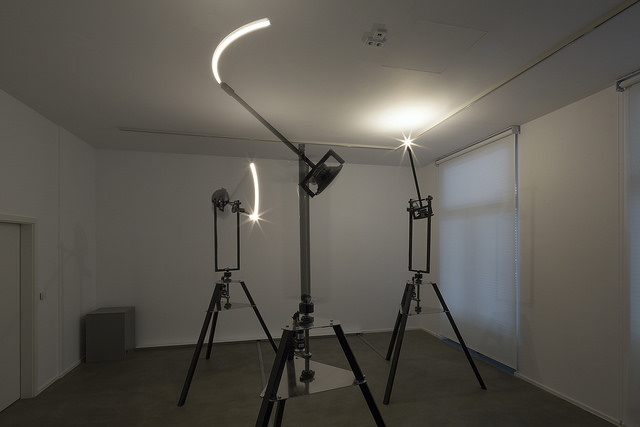
Axon [2016]
Axon is a kinetic audiovisual installation consisting of three identical robotic units that communicate with each other and their environment through light, sound, and movement. The presence of an audience in the space has an influence on how this group of robots behaves.
In his book “On Intelligence” Jeff Hawkins puts forth a theory that describes how neural networks, such as the human brain, could function. His theory proposes that our entire memory is stored in time patterns, sequences of electrical impulses that shoot through our brains and enable us to analyze, repeat, and change them. According to Hawkins, approaching neural networks from this perspective could eventually lead to the creation of actual autonomous and creative machines.
Hawkin’s notion of memory as time patterns which are encoded as interchangeable data streams in our body formed one of the starting points in the development of Axon. Such patterns can be modified by sensory input while simultaneously controlling the output of an actuator. In the installation light, sound, and movement are controlled and interpreted by the system itself. The resulting behavior is generated through feedback loops that are produced between the inputs and outputs of the three separate units and the simple algorithms that control them. This chain reactions sets in motion a generative composition that is written, performed, and conducted by the robotic cluster itself
Axon is a commissioned work by NOME Gallery in Berlin for the Oscillations exhibition and is financially supported by Stichting Stokroos.
Photos by Bresadola+Freese/drama-berlin.de for NOME Gallery